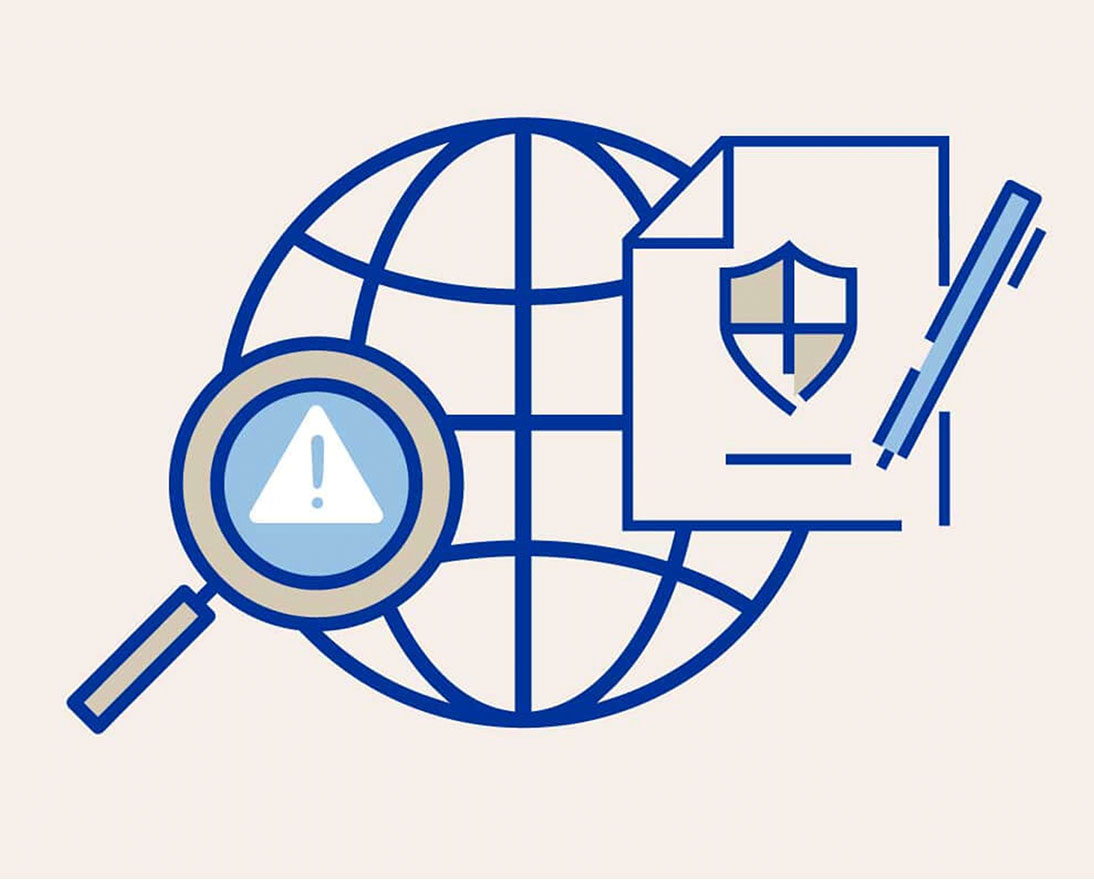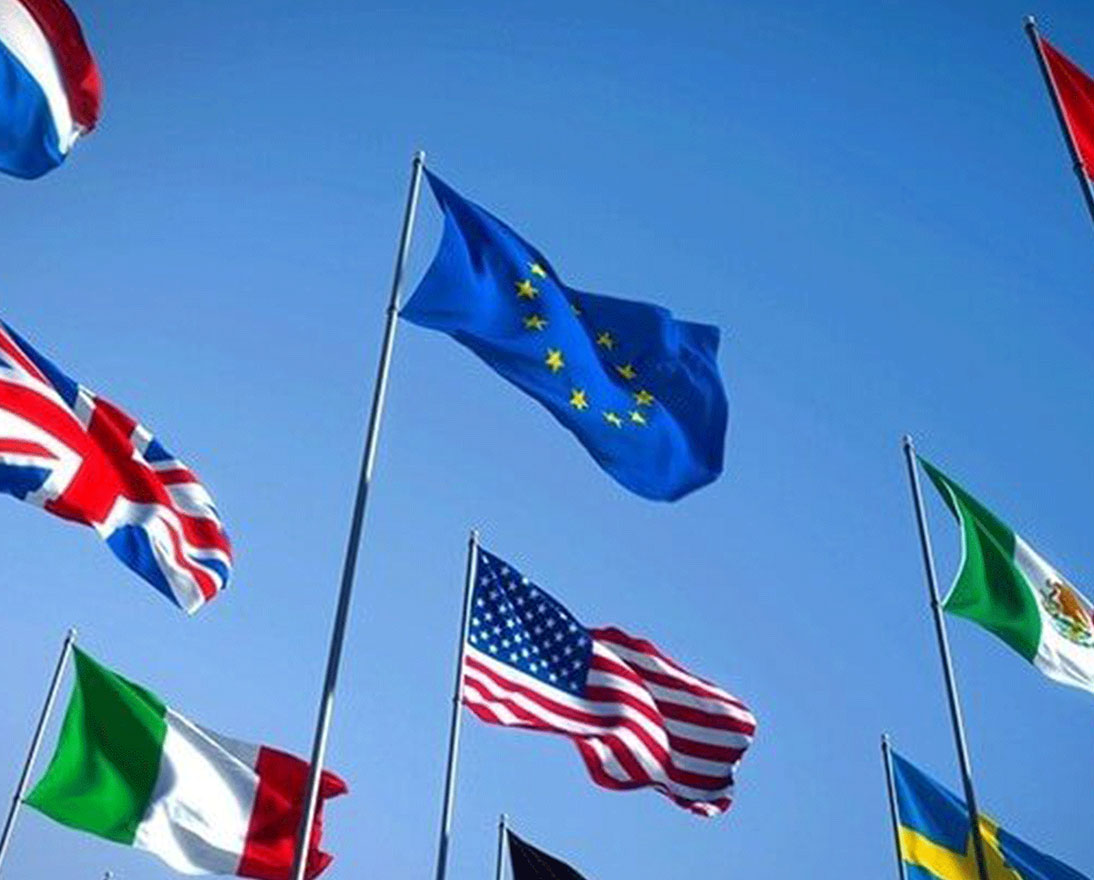
Businesses and governments have something in common
Geopolitical scenario analysis is common practice for governments. In today's changing political risks landscape, businesses must take a holistic view of commercial risks linked to shifting political dynamics.
In a new uncertain global political world, businesses and governments have something in common
For years, governments have been producing detailed reports which look at various geopolitical power centers and their long-range dynamics.
For two decades, after each United States presidential election, the National Intelligence Council has published Global Trends, to give policymakers a snapshot of political shifts.
European Union institutions have produced public reports like European Parliament in 2025, which identify risks that could have important sociopolitical and economic ramifications.
In today’s unpredictable geopolitical landscape, sudden developments – from diplomatic incidents to terrorism – are taking markets and businesses by surprise. So, it’s not just governments that must consider such data — it’s companies too.
The global system could change radically and companies have to know what the possible consequences are...
“Governments and businesses face a huge amount of uncertainty with the political events coming up this year,” says Dr. Mathew J. Burrows, Director, the Atlantic Council's Strategic Foresight Initiative, citing elections in Europe, Iran, and China’s Communist Party congress.
Burrows had a 28-year career at the CIA and authored Global Trends in 2005, 2008 and 2012. As part of the Atlantic Council’s collaboration with Zurich Insurance Group, he has put his expertise into a 2017 report which examines current likely paths of risks – such as the Saudi-Iran conflict – against alternative futures, to gauge their sociopolitical and economic effects, around a 20 year horizon.
“The global system could change radically and companies have to know what the possible consequences are – where they need to position themselves in order to succeed,” he says.
Guy Miller, Chief Market Strategist & Head of Macroeconomics, Zurich Insurance Group says that nowadays, companies need to understand geopolitical risks better than ever before. The ones that fail to prepare for them, he adds, “may leave themselves open to being blindsided by events that might happen on the other side of the world but which may have direct consequences for their business.”
In one example of interconnected global risks, commodity export-dependent countries, particularly in Sub-Saharan Africa, defaulted on their sovereign debt — which then exposed foreign businesses selling or lending to government entities or state-owned enterprises there. This risk largely crystalized due to low commodity prices, driven in part by the economic slowdown in China. While, sovereign defaults show no signs of subsiding soon, they are insurable.
Equally, governments and central banks may take steps to tighten the reigns on capital flight using capital controls (a mechanism China and Greece have employed). This could severely limit withdrawals by foreign investors with significant interests in a country. The effect of these measures in China has been a surge of requests for currency inconvertibility insurance, according to David H. Anderson, Executive Vice President and Managing Director, Credit & Political Risk, Zurich Insurance Group.
A Protectionist Shift in the West
As global risks interconnect and cascade, hot conflicts in the Middle East have spurred migration to Western countries, in some cases eliciting a backlash by local citizens who have turned their support to protectionist governments and policies. In other cases, existing governments have been gearing their policies towards a more protectionist stance. The latter can stifle free trade and challenge businesses.
Protectionism has been on the rise since the 2008 global financial crisis, according to Our World Transformed: Geopolitical Shocks and Risks. The middle class and lower skilled workers in advanced economies like the US and Britain, beset by income inequality and forsaken by globalization, have loudly and clearly rejected trade agreements like TTIP, TPP and NAFTA, with their votes.
Today, in the wake of a rollercoaster political year, the global growth environment is picking up and retreating from the risks of deflation. A more synchronized recovery between the developed world and emerging economies is becoming evident.
Unemployment rates have started to fall meaningfully across the Eurozone and are now at a historic low in the case of Germany. US unemployment has fallen below five percent and asset prices have generally been trending upward as well.
While the economic climate appears healthy in the immediate term, we may not be out of the woods for the long term, cautions Miller. “Business and consumer optimism has jumped, but global imbalances still prevail, with debt at record levels in terms of government, consumer and corporate borrowing,” he says. “It’s fine when interest rates are extremely low and growth is rising, but once that dynamic changes, I think the global environment is still vulnerable, particularly once the next downturn arrives.”
On the European Union front, he notes: “Europe is over-banked, with the sector still under-capitalized,” adding that given better markets and what he sees as the constructive move away from negative interest rates globally, European banks have an opportunity to improve both the quantity and quality of their capital.
Apprehension about the future of the Eurozone has been palpable ahead of elections in France and Italy. “If we had a situation where the Eurozone appeared to be breaking up, the fallout may not be contained in Europe. Through the financial transmission mechanisms, it is likely this would become a global issue and could lead to a global recession,” he warns.
“Whether you’re a company, an individual or a government, more can be done to reduce your debt exposures, increase your growth dynamic and improve flexibility,” Miller says. He urges governments and the private sector to invest in productivity-enhancing tools and techniques. As important will be workforce training and development for those who feel abandoned by globalization and are threatened by automation.
“The EU is really at a crossroads,” says Burrows, who also believes labor market reform can blaze a forward path for the Union. While this may cause disruption in the short term, “Over the longer run you could actually see a much more stable situation, both economically and politically.” Circumstances have been advantageous too: low energy prices and European goods bolstered by a competitive Euro.
In the private sector, firms are busy mitigating immediate risks to their input costs. Post-Brexit, with sterling down and import prices rising, businesses have been looking into domestic sourcing, notes Miller. He has also understandably seen companies hold off on committing capital until they know whether they can passport goods to Europe.
Trade barriers – be they tariffs, taxes or quotas on imports – are a clear concern for global businesses.
Whether you’re a company, an individual or a government, you have to do more to reduce your debt exposures, increase your growth dynamic and improve flexibility.
How Trade Barriers May Impact Global Supply Chains, Global Value Chains
For manufacturing-reliant companies, potential trade barriers can delay or halt parts of the production process, reverberating through global supply chains (GSC) or as they might better be described global value chains (GVC). This can hit customer deliveries, productivity, reputation and revenue.
In an interlinked and often interdependent world, supply chains have been becoming more fragile. The 2016 BCI Supply Chain Resilience Report found that 43% of organizations surveyed had over 21 key suppliers, and that 34% had been hit with cumulative losses of at least €1 million as a result of supply chain disruptions.
"The tariff risk I think also takes a lot of companies by surprise,” says Anderson, adding that the prospect of these added trade barriers has been a big concern for customers. Yet, highly diversified multinationals are in a better position to weather this peril, he says.
Insurance doesn’t cover tariff risk per se but companies can mitigate it by diversifying their supply chains and engaging with governments to convey the benefits of low tariffs on global trade. Trade credit insurance does cover the risk that a buyer may default, whether that default was caused by tariffs or another reason. Also, some trade political risks, like embargo and export license cancellation, are insurable.
“It is also important to think about key supplier services such as IT development or call centers that are critical to your overall value proposition and which are based in countries with high geopolitical exposures”, says Nick Wildgoose, Global Supply Chain Product Leader, Zurich Insurance Group.
Beyond the uncertainty in the EU and the United Kingdom, the relationship between the US and China — historically cooperative but competitive trading partners — arguably hangs in the balance. And China is at the center of many GVCs.
Escalating China-US tensions concerning the South China Sea would therefore likely entail significant costs for firms that participate in GVCs, along with substantial economic blowback.
It may therefore be beneficial for affected businesses to assess exposure points in their supply chains. They may then develop business continuity plans around diversifying suppliers —while factoring in the substantial costs of doing so. Products like supply chain insurance can cover risk as well, with limited exclusions. Innovations such as 3-D printing also localize manufacturing and reduce GVC dependence.
Miller notes that as some emerging markets, including China, have become more consumer-led, their service sectors are expanding. “As we move towards more service-driven economies, some of the issues around protectionism may diminish somewhat,” he explains, “The services component is harder to isolate, because you’re not dealing with a hard physical good crossing a border.”
Emerging markets
Tips for doing business in emerging markets with higher geopolitical risk
Businesses operating overseas:
- Engage with the local community
- Employ a domestic workforce so the company’s brand is perceived as local
- Demonstrate to the local population and government that the country is benefiting from the company’s presence — through education, tech advancement, tax revenues, etc.
| Risk | Product |
| Sovereign defaults | Non-honoring of sovereign guarantee insurance |
| Political violence, terrorism | Political risk insurance coverage for political violence |
| Expropriation | Political risk insurance coverage for expropriation |
| Capital controls | Political risk insurance coverage for currency inconvertibility |
| Trade disruption | Supply chain coverage, embargo, export license cancellation, trade credit insurance. |
Companies go into the emerging markets because that is where the higher levels of growth are. If you’re a natural resource company that can be where the most attractive oil and gas or mining deposits are. So when you go into these areas, you just need to be conscious of the elevated risk and manage the investment accordingly.
Ultimately, as firms navigate the risks of business as usual in a geopolitical landscape of policies and governments in flux, it’s clear that they may need to step in and act more like governments — make intelligence-gathering and scenario-based contingency planning an integral part of their business models.
“A lot of companies struggle with geopolitical risk,” says Anderson, highlighting unprecedented shifts in this landscape, which have prompted a questioning of post-World War II political and economic relationships. “In that environment it becomes very difficult to determine where things might go,” he concludes, “That’s why companies need to look at a variety of scenarios and build contingency plans around each one.”
Key takeaways:
- Trade barriers, like import taxes and tariffs, can seriously impact global supply/value chains, prompting the need for sourcing from alternative suppliers – often at higher costs
- Tariff risks – a major concern for businesses – are not insurable but companies may mitigate them by communicating to governments the benefits of low tariffs on global trade
- In a world connected by the internet and globalization, a company may still be affected by geopolitical risks crystalizing halfway across the world which can impact not just on the flow of goods but also in respect of the added value services
- Like governments, businesses may benefit from adopting scenario-based contingency planning to address risks in today’s fast-changing geopolitical environment



